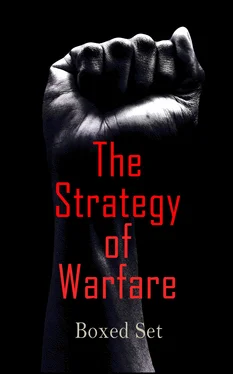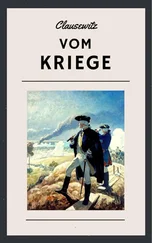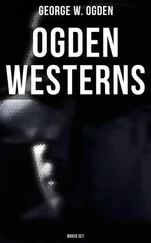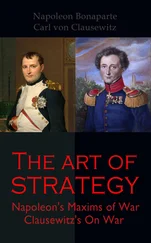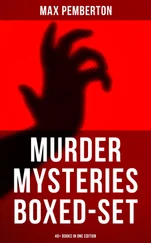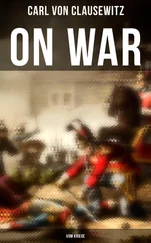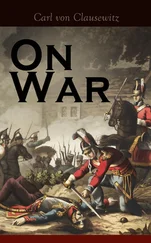SSU K`U CH`UAN SHU CHIEN MING MU LU, ch. 9, fol. 22 sqq.
1. WU TZU, in 1 CHUAN or 6 chapters. By Wu Ch`i (d. 381
B.C.). A genuine work. See SHIH CHI, ch. 65.
2. SSU-MA FA, in 1 CHUAN or 5 chapters. Wrongly attributed to Ssu-ma Jang-chu of the 6th century B.C. Its date, however, must be early, as the customs of the three ancient dynasties are constantly to be met within its pages. See SHIH CHI, ch. 64. The SSU K`U CH`UAN SHU (ch. 99, f. 1) remarks that the oldest three treatises on war, SUN TZU, WU TZU and SSU-MA FA, are, generally speaking, only concerned with things strictly military — the art of producing, collecting, training and drilling troops, and the correct theory with regard to measures of expediency, laying plans, transport of goods and the handling of soldiers — in strong contrast to later works, in which the science of war is usually blended with metaphysics, divination and magical arts in general.
3. LIU T`AO, in 6 CHUAN, or 60 chapters. Attributed to Lu Wang (or Lu Shang, also known as T`ai Kung) of the 12th century B.C. 74But its style does not belong to the era of the Three Dynasties. Lu Te-ming (550-625 A.D.) mentions the work, and enumerates the headings of the six sections so that the forgery cannot have been later than Sui dynasty.
4. WEI LIAO TZU, in 5 CHUAN. Attributed to Wei Liao (4th cent. B.C.), who studied under the famous Kuei-ku Tzu. The work appears to have been originally in 31 chapters, whereas the text we possess contains only 24. Its matter is sound enough in the main, though the strategical devices differ considerably from those of the Warring States period. It is been furnished with a commentary by the well-known Sung philosopher Chang Tsai.
5. SAN LUEH, in 3 CHUAN. Attributed to Huang-shih Kung, a legendary personage who is said to have bestowed it on Chang Liang (d. 187 B.C.) in an interview on a bridge. But here again, the style is not that of works dating from the Ch`in or Han period. The Han Emperor Kuang Wu [25-57 A.D.] apparently quotes from it in one of his proclamations; but the passage in question may have been inserted later on, in order to prove the genuineness of the work. We shall not be far out if we refer it to the Northern Sung period [420-478 A.D.], or somewhat earlier.
6. LI WEI KUNG WEN TUI, in 3 sections. Written in the form of a dialogue between T`ai Tsung and his great general Li Ching, it is usually ascribed to the latter. Competent authorities consider it a forgery, though the author was evidently well versed in the art of war.
7. LI CHING PING FA (not to be confounded with the foregoing) is a short treatise in 8 chapters, preserved in the T`ung Tien, but not published separately. This fact explains its omission from the SSU K`U CH`UAN SHU.
8. WU CH`I CHING, in 1 CHUAN. Attributed to the legendary minister Feng Hou, with exegetical notes by Kung-sun Hung of the Han dynasty (d. 121 B.C.), and said to have been eulogized by the celebrated general Ma Lung (d. 300 A.D.). Yet the earliest mention of it is in the SUNG CHIH. Although a forgery, the work is well put together.
Considering the high popular estimation in which Chu-ko Liang has always been held, it is not surprising to find more than one work on war ascribed to his pen. Such are (1) the SHIH LIU TS`E (1 CHUAN), preserved in the YUNG LO TA TIEN; (2) CHIANG YUAN (1 CHUAN); and (3) HSIN SHU (1 CHUAN), which steals wholesale from Sun Tzu. None of these has the slightest claim to be considered genuine. Most of the large Chinese encyclopedias contain extensive sections devoted to the literature of war. The following references may be found useful: —
T`UNG TIEN (circa 800 A.D.), ch. 148-162.
T`AI P`ING YU LAN (983), ch. 270-359.
WEN HSIEN TUNG K`AO (13th cent.), ch. 221.
YU HAI (13th cent.), ch. 140, 141.
SAN TS`AI T`U HUI (16th cent).
KUANG PO WU CHIH (1607), ch. 31, 32.
CH`IEN CH`IO LEI SHU (1632), ch. 75.
YUAN CHIEN LEI HAN (1710), ch. 206-229.
KU CHIN T`U SHU CHI CH`ENG (1726), section XXX, esp. ch. 81-
90.
HSU WEN HSIEN T`UNG K`AO (1784), ch. 121-134.
HUANG CH`AO CHING SHIH WEN PIEN (1826), ch. 76, 77.
The bibliographical sections of certain historical works
also deserve mention: —
CH`IEN HAN SHU, ch. 30.
SUI SHU, ch. 32-35.
CHIU T`ANG SHU, ch. 46, 47.
HSIN T`ANG SHU, ch. 57,60.
SUNG SHIH, ch. 202-209.
T`UNG CHIH (circa 1150), ch. 68.
To these of course must be added the great Catalogue of the
Imperial Library: —
SSU K`U CH`UAN SHU TSUNG MU T`I YAO (1790), ch. 99, 100.
Footnotes
1SHI CHI, ch. 65.
2He reigned from 514 to 496 B.C.
3SHI CHI, ch. 130.
4The appellation of Nang Wa.
5SHI CHI, ch. 31.
6SHI CHI, ch. 25.
7The appellation of Hu Yen, mentioned in ch. 39 under the year 637.
8Wang-tzu Ch`eng-fu, ch. 32, year 607.
9The mistake is natural enough. Native critics refer to a work of the Han dynasty, which says: "Ten LI outside the WU gate [of the city of Wu, now Soochow in Kiangsu] there is a great mound, raised to commemorate the entertainment of Sun Wu of Ch`i, who excelled in the art of war, by the King of Wu."
10"They attached strings to wood to make bows, and sharpened wood to make arrows. The use of bows and arrows is to keep the Empire in awe."
11The son and successor of Ho Lu. He was finally defeated and overthrown by Kou chien, King of Yueh, in 473 B.C. See post.
12King Yen of Hsu, a fabulous being, of whom Sun Hsing-yen says in his preface: "His humanity brought him to destruction."
13The passage I have put in brackets is omitted in the T`U SHU, and may be an interpolation. It was known, however to Chang Shou-chieh of the T`ang dynasty, and appears in the T`AI P`ING YU LAN.
14Ts`ao Kung seems to be thinking of the first part of chap. II, perhaps especially of ss. 8.
15See chap. XI.
16On the other hand, it is noteworthy that WU TZU, which is not in 6 chapters, has 48 assigned to it in the HAN CHIH. Likewise, the CHUNG YUNG is credited with 49 chapters, though now only in one only. In the case of very short works, one is tempted to think that P`IEN might simply mean "leaves."
17Yeh Shih of the Sung dynasty [1151-1223].
18He hardly deserves to be bracketed with assassins.
19See Chapter 7, ss. 27 and Chapter 11, ss. 28.
20See Chapter 11, ss. 28. Chuan Chu is the abbreviated form of his name.
21 I.e. Po P`ei. See ante.
22The nucleus of this work is probably genuine, though large additions have been made by later hands. Kuan chung died in 645 B.C.
23See infra, beginning of INTRODUCTION.
24I do not know what this work, unless it be the last chapter of another work. Why that chapter should be singled out, however, is not clear.
25About 480 B.C.
26That is, I suppose, the age of Wu Wang and Chou Kung.
27In the 3rd century B.C.
28Ssu-ma Jang-chu, whose family name was T`ien, lived in the latter half of the 6th century B.C., and is also believed to have written a work on war. See SHIH CHI, ch. 64, and infra at the beginning of the INTRODUCTION.
29See Legge's Classics, vol. V, Prolegomena p. 27. Legge thinks that the TSO CHUAN must have been written in the 5th century, but not before 424 B.C.
30See MENCIUS III. 1. iii. 13-20.
31When Wu first appears in the CH`UN CH`IU in 584, it is already at variance with its powerful neighbor. The CH`UN CH`IU first mentions Yueh in 537, the TSO CHUAN in 601.
32This is explicitly stated in the TSO CHUAN, XXXII, 2.
33There is this to be said for the later period, that the feud would tend to grow more bitter after each encounter, and thus more fully justify the language used in XI. ss. 30.
34With Wu Yuan himself the case is just the reverse: — a spurious treatise on war has been fathered on him simply because he was a great general. Here we have an obvious inducement to forgery. Sun Wu, on the other hand, cannot have been widely known to fame in the 5th century.
Читать дальше
